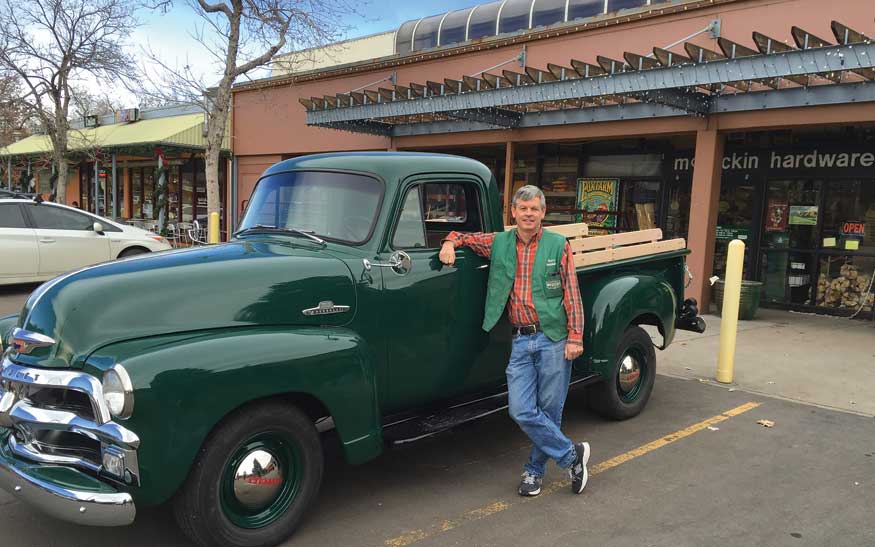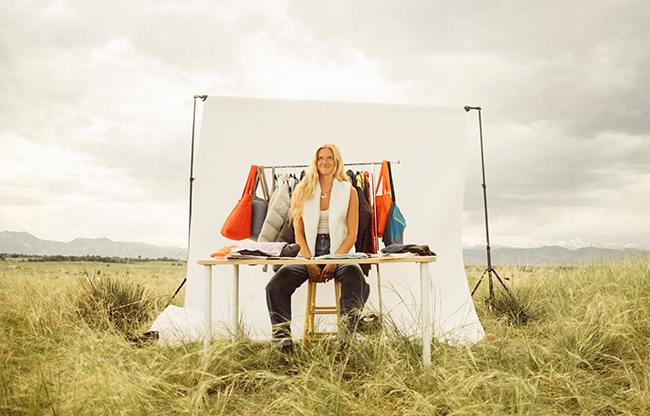Speaking for Animals
05 Jun 2015
Boulder scientist champions animals as feeling, thinking beings
By Julie Hoffman Marshall At age 4, Marc Bekoff saw a grown man hitting a dog on the streets of Brooklyn, N.Y., and didn’t hesitate to act. “I started yelling at him,” Bekoff recalls, “because it was just wrong. I didn’t even think about it.” The dog beater turned his wrath on Bekoff’s father, who ignored it, supporting his son’s born empathy for animals. Since he was 2, Bekoff had been asking what the squirrels, birds and rabbits were feeling and thinking. “My parents never blew me off for caring about animals,” he says. “I’ve always wanted to know how humans and other animals all fit together.” Today, Bekoff, 69, speaks for animals on a much larger stage. He’s published 30 books and more than 1,000 articles on animal protection, behavior and conservation, often collaborating with primatologist Jane Goodall. When he’s not bicycling hundreds of weekly miles, or teaching his animal-behavior class at the Boulder County Jail, Bekoff may be in China rehabilitating endangered moon bears, or on another continent as a guest speaker on the emotional lives of animals. His overarching message: to respect, admire and appreciate the complexities of animals as sentient beings who deserve to exist in the natural world. Bekoff’s critics charge that he attributes human traits to animals, but scholars worldwide counter that his research is unimpeachable, changing the way we treat animals in the field, in the lab and in our homes. He’s a leader among cognitive ethologists who demonstrate that mice and chickens show empathy, rats enjoy being tickled, and dogs feel jealousy. And as professor emeritus of ecology and evolutionary biology at CU Boulder, he has influenced generations of future researchers. Bekoff is a hometown treasure, says CU sociology professor Leslie Irvine. “With Temple Grandin at [Colorado State University] and Marc at CU, we have a brain trust in animal behavior and animal welfare here on the Front Range,” she says.A Goldfish in Brooklyn
Much of Bekoff’s work and life has focused on dogs, including the late Jethro, his German shepherd and Rottweiler mix. But ironically, Bekoff grew up with a goldfish. “My mom got bit by a dog once and was afraid,” he explains, sitting at a backroom table at Boxcar Coffee Roasters. One of his favorite books he wrote is about a bear: Jasper’s Story: Saving Moon Bears is an award-winning children’s book about an Asian black bear freed from a cage after 15 years of being used by captors who extracted his bile for popular Asian medicines. Jill Robinson, founder of Animals Asia and the Moon Bear Rescue Centre in Chengdu, China, co-authored the book. “Marc was deeply connected to Jasper,” Robinson says from China. The bear had arrived at the sanctuary with broken teeth, a metal catheter in his gallbladder to drain bile, and missing fur from biting the bars and wriggling to get free. But unlike other moon bears, Jasper didn’t explode with anger at humans upon release. He licked honey from Bekoff’s fingers, and to everyone’s surprise, Jasper used his body to separate two other bears about to fight. “We wanted to produce a story that would show the true forgiveness of an animal who had been tortured for his entire life,” says Robinson, who has saved more than 400 moon bears in China and Vietnam. “Animal emotions are every bit as profound as ours, and Marc’s books and papers have always superbly reflected and explained that philosophy.” While in China, Bekoff not only shoveled bear excrement and doled out medicine, but he also spoke to bear captors. “I know for a fact that if not for Marc, the bear farmers would never have heard anything like it—the very idea of animals feeling pain and having emotion,” Robinson says. “Marc makes you think hard about your impact in the world, and how you can help so many species simply by considering your compassionate footprint on the earth. I’d simply like Boulder to know that they have a hero amongst them.”At the Dog Park
Jasper’s Story is a book of hope for children, who have an innate compassion for animals, Bekoff says. “There’s an actual term, biophilia, which is our natural tendency to be attracted to animals and nature.” For her eighth-grade science project on dogs at play, Summit Middle Charter School student Alexandra Weber used Google to find a behavior expert. “Marc’s name kept popping up. I couldn’t believe he really lives in Boulder,” she says. Bekoff responded to Alexandra’s email within minutes, and guided her research. After dog-park observations of her own two dogs, she proved her hypothesis: Dogs who meet for the first time play differently than dogs who have met before. “I didn’t know there were all these secret interactions between dogs,” says Alexandra, 14, whose project won second place in Boulder Valley School District’s regional science fair earlier this year. Most surprising to find, she says, was that unfamiliar dogs need to bump noses as an introduction before play begins, whereas dogs who have met before will “pounce on each other and dive right into rough-and-tumble play.” She videotaped many guardians fearfully pulling dog friends apart, interpreting natural and safe behavior as aggressive. “That’s got to be really confusing to dogs who are there to have fun,” she says. “And that’s important, because if your dog is not having fun, what’s the point?” Alexandra can see herself doing this study for 10 more years, looking at breed, size, sex and other variables. “It’s really fun,” she says. “Marc opened my eyes to animal behavior, and it’s really important to know that animals, not just humans, have emotions and feelings and communicate.” Despite all the horrific abuse he’s seen around the globe, Bekoff says Alexandra and her peers keep him hopeful and inspired. “There’s a sustainable interest in the lives of other animals, and a need to protect them,” he says. “When I’m done I know there will be lots of people to follow what I do.”A CALL TO ACTION
“If there is a particular animal you want to help, go online and start looking,” Marc Bekoff says—or consider these organizations that need immediate help: Greenwood Wildlife Rehabilitation Center (Lyons) cares for injured birds, raccoons, foxes, coyotes and more. Volunteer coordinator Jenny Bryant says, “We’re ramping up for our busy season [March-October] and need help for animal care, education, outreach and marketing.” 303-823-8455; www.greenwood wildlife.org/volunteer.php The Wild Animal Sanctuary (Keenesburg) cares for rescued tigers, lions, bears and more. “We have 140-plus active volunteers, but could use twice that number with over 400 large carnivores to care for,” says executive director Pat Craig. 303-536-0118; www.wildanimalsanctuary.org Colorado Horse Rescue (Longmont) shelters and rehabilitates abused horses for adoption. “We are always looking for volunteers, including groups, for feeding, watering, mucking, facilities maintenance and administrative work,” says coordinator Rachel Corbman. 720- 494-1414 ext. 2202; www.chr.org Medicine Horse Program (Boulder) provides equine-assisted therapy for families in need. Executive director Kathy Johnson says, “We always need volunteers for assisting as horse handlers in our therapy programs, for barn work, for the care of horses, and to help in our office.” 720-406-7630; www.medicinehorse.org Longhopes Donkey Shelter (Bennett) rescues and rehabilitates donkeys for adoption. “Oh yes, we need volunteers to help us feed, clean paddocks and train the donkeys. We have volunteer opportunities almost every day,” says founder and CEO Kathy Dean. 303-644-5930; www.longhopes.org Peaceful Prairie (Deer Trail) rescues and cares for sheep, goats, turkeys, pigs, cows and more, and welcomes weekend volunteers to work at the sanctuary. 303-769-4997; www.peacefulprairie.org Prairie Dog Coalition (Boulder) advocates for prairie dog conservation and protection, and education for people. “We need 30 volunteers for the Prairie Dog Half Marathon on Sept. 19,” says office coordinator Kristen Nelson. “We also have a community outreach volunteer position; ‘Living on Burrowed Time’ annual gala volunteer position; and a prairie dog relocation volunteer position for the summer.”720-938-0788 or knelson@humanesociety.org; www.humanesociety.org/pdc Boulder County Nature Association (Longmont) uses volunteers to seek and identify raptors and burrowing owls for seasonal research projects. “A training session is held at the beginning of each season to familiarize new volunteers with protocol and methodology,” Sue Cass, its president, says. “Volunteers need not be experts in raptor field identification to apply.” 303-641-4809; www.bcna.org Birds of Prey (Broomfield) rescues and rehabilitates more than 500 raptors each year and needs volunteers for animal care, cleaning and cage construction and to work in its thrift store. 303 460-0674 or (for the store) 720-890-4311; www.birds-of-prey.org Rooster Sanctuary at Danzig’s Roost (Bennett) is a sanctuary for abandoned and injured roosters, hens, ducks and more. Danzig’s Roost is currently taking volunteers to assist in ongoing care and maintenance of the sanctuary. 720-208-8400; www.danzigtherooster.com Animal Help Now connects people with immediate resources to rescue injured wild animals, help lost pets and more. “We use a lot of volunteers from Boulder County,” says executive director David Crawford. www.animalhelpnow.orgJulie Hoffman Marshall is a freelance writer and author of Making Burros Fly: Cleveland Amory, Animal Rescue Pioneer. Her cat Simba turns 24 years old on July 4; her cat Yogi is a youthful 20.












